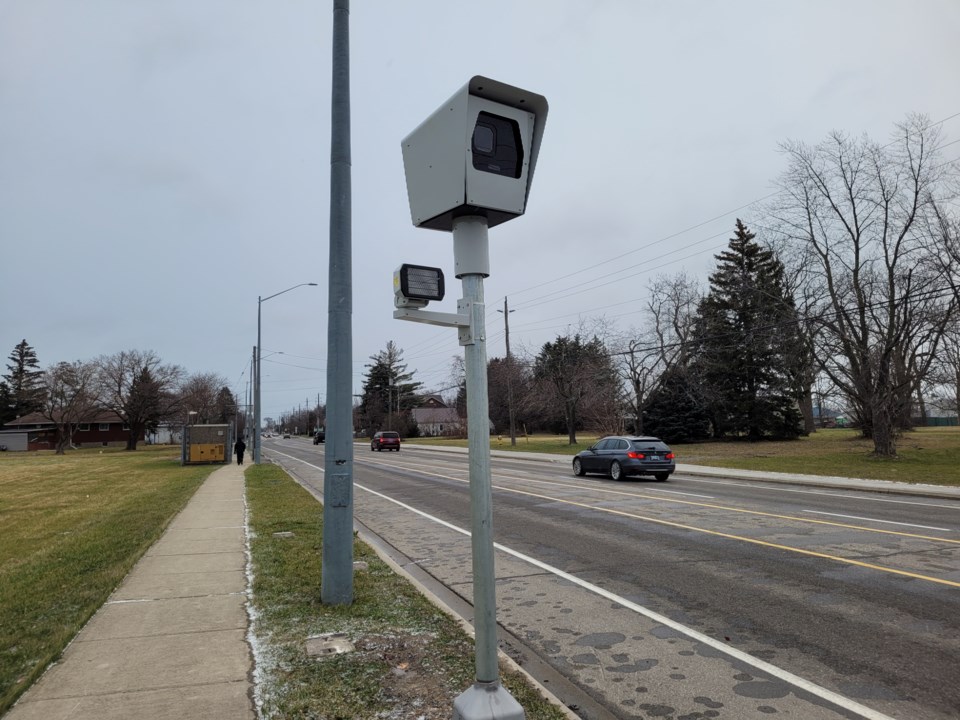Speed cameras were an issue regional council put the pedal to again last week.
During Thursday’s council meeting, an agenda item included information from a public works committee meeting, where the majority of regional politicians agreed to move ahead with eight new cameras by 2026, at a cost of close to $1.9 million.
Councillors went back to an earlier discussion about other avenues being explored, such as speed humps, when one councillor suggested more homework should be done before approving speed cameras, referring to research about speed humps that have been more effective in places like The U.K.
Speed humps have never been used on regional roads, explained transportation director Frank Tassone, mostly due to “speed and volume of traffic,” and the impact they would have on plowing operations in the winter.
Flashing lights, also known as beacons, were part of the conversation, something the region has compared effectiveness of speed cameras to, said Tassone.
Cameras have resulted in an average speed reduction of 13 km/h since the first one was installed last September, while lights have resulted in a reduction of 3.4 km/h.
Niagara-on-the-Lake Lord Mayor Gary Zalepa said road safety has been the “number one” concern he’s received since becoming an elected official, and he’s confident in how the region’s Vision Zero functions, using speed cameras, have worked.
“People need to be hit in the pocket book when they speed,” said Zalepa. “That changes behaviour.”
He also doesn’t think flashing lights is the answer.
“If you’re driving your car through a school zone and you need a flashing light to remind you you’re in a school zone, maybe you shouldn’t be driving your car,” said Zalepa.
Flashing lights are not in operation in school zones where speed cameras exist. Tassone said this is because drivers would have an argument that they weren’t flashing when they received a ticket.
Transportation commissioner Terry Ricketts said later in the meeting that when automated speed enforcement equipment is set up, there is a requirement that lights are deactivated.
They “don’t work in unison,” said Ricketts.
Niagara-on-the-Lake Regional Coun. Andrea Kaiser asked if “starburst” signs are at each location where there is a camera, to which Tassone answered that she is correct.
“Drivers are used to seeing that starburst attributed to either a new signal or new stop sign,” said Tassone. “That would be something recognizable to motorists to show there’s something new ahead.”
Tassone also said earlier in the meeting that there are some locations where there was a camera previously – that the housing still stands.
There are four cameras rotating in Niagara currently. In NOTL there is one on York Road in Niagara-on-the-Lake in front of St. Davids Public School; and on Montrose Road in Niagara Falls, between Watson Street and Lundy's Lane in front of Greendale Elementary School.
The others are Louth Street between Rykert Street and Pelham Road near DSBN Academy in St. Catharines, as well as Townline Road between Harvest Gate and Canborough Road in front of Smithville District Christian High School in West Lincoln.
Revenue generated through fines supports other road safety measures across the region.
Tassone told regional councillors that income from charges should “outpace” costs by the end of the year.
There could be possible changes to signage with Vision Zero, which is expected to be included in an upcoming report, councillors were told.
